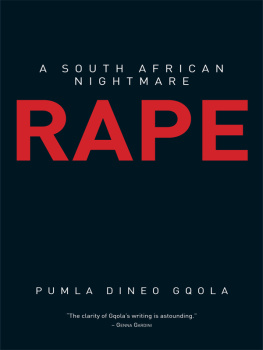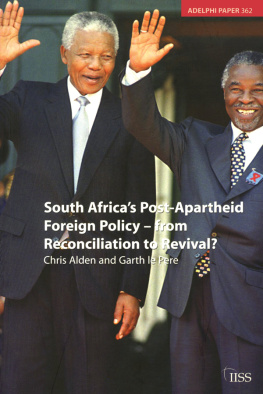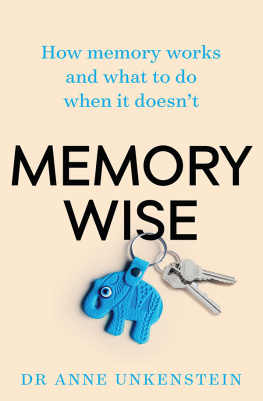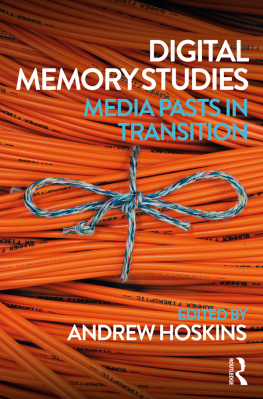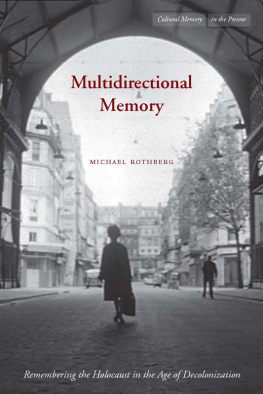What is slavery to me?
POSTCOLONIAL/SLAVE MEMORY IN POST-APARTHEID SOUTH AFRICA
Pumla Dineo Gqola
Published in South Africa by:
Wits University Press
1 Jan Smuts Avenue
Johannesburg
2001
http://witspress.wits.ac.za
Copyright Pumla Dineo Gqola 2010
First published 2010
ISBN 978 1 86814 507 2
All rights reserved. No part of this publication may be reproduced, stored in a retrieval system, or transmitted in any form or by any means, electronic, mechanical, photocopying, recording or otherwise, without the written permission of the publisher, except in accordance with the provisions of the Copyright Act, Act 98 of 1978.
Cover art courtesy Berni Searle:
Details of Girl, From the Colour Me series, 1999 (see page 176).
Edited by Lee Smith
Indexed by Margie Ramsay
Cover design and layout Hybrid Design
Printed and bound by Ultra Litho (Pty) Ltd
CONTENTS
For
Nkcithakalo and Nototose Rasoyi (ne Gqola) Sakiya and Sebabatso Gugushe (ne Ramapepe) Mabusetsa Gugushe
ACKNOWLEDGEMENTS
My birth family, who have always supported and loved me, are truly Qamatas greatest gift. My parents, Dambile and Thato, insisted that intellectual independence, generosity and living with integrity are standards worth living by. Lebohang, Vuyokazi and Melisizwe, my siblings, are my constant: they celebrate my triumphs, apparently know everything about me and teach me humility. Graham Huggan, my doctoral supervisor, read several drafts in this books earlier lives. I am grateful for his humour, time and vision. Graham and Stephan Klasen provided fine intellectual leadership at the first International Interdisciplinary Postcolonial Studies Graduirtenkolleg, which allowed for exchanges that would not have happened otherwise. Desire Lewis and David Dabydeen inspire me and broaden my world in more than a million ways. The financial support of the Deutsche Forschungsgemeinschaft (DFG) and the Bavarian government is hereby acknowledged for enabling the original study. Antje Schuhmann, Rumana Hashem, Fatmata Lovetta Sesay, Nina Engelhard, Thulani Khanyile, Tirop Simatei, Helene Strauss, Zine Magubane, Zimitri Erasmus, Yvette Abrahams, Vanessa Ludwig all went well beyond the call of collegiality, friendship and kinship. They shared their own work, time and much more. Marion and Peter Schuhmann became my family in Munich, and I owe Antje a debt of gratitude I can never repay for sharing them with me. Angelo Fick, Christopheros Campbell, Pandora Ndungane, Putuma Patrice Gqamana and Kaizer Nkosi allowed me to feel connected to something bigger and more beautiful all the time. Oya and Ajda Ataman, Kimberley Yates, Jane Poyner, Michele Barzey and Jo-Anne Strauss offered much needed diversions. This book benefited tremendously from Thembinkosi Goniwes and Gabeba Baderoons insights, comments and criticism, without which this would be a much poorer book. Its weaknesses are all mine. I am grateful to my teachers who affirmed that literature is not a luxury, that language always matters and that women should own their minds. They were the kinds of thinkers, teachers and women I wanted to grow up and be like: Nomntu Mali, Fatima Dada and Carli Coetzee. Angelo Fick, Nomboniso Gasa and Gail Smith, thank you for everything: your breathtaking courage, unwavering support, the gift of letting me share in your own work, your generosity, and telling me when I am wrong. Thank you to Ncumisa Mnyani, Barbara Keitumetse Mashope, Nokuthula Mazibuko, Jaysveree Louw, Chijioke Uwah, Derilene Marco, Ange Khumalo, Nthabiseng Motsemme, Dina Ligaga and Sarah Chiumbu for things too numerous to mention. The wonderful Berni Searle gave permission for her work to be used on the cover of this book, which gave me additional pleasure, given my analysis of her work within its pages. I am most thrilled to have a Searle artwork on the second cover of my work, the first having been a journal special issue I edited in 2005. My colleagues at the University of the Free State offered stimulating conversations and growth opportunities on an unpredictable university campus. This is especially true of Engela Pretorius, Susan Brokensha and Mariza Brooks. Other colleagues in the Department of English and Classical Culture took on larger duties during my stints at the Universities of Warwick and Munich: Pat Minaar, Patsy Fourie, Willfred Greyling, Humaira Ahmed, Margaret Raftery and Arlys van Wyk. Team Wits University Press have been incredible. Thank you especially to Veronica Klipp and Julie Miller. Melanie Pequeux and her production team were available for extended consultations over the books positioning. Lee Smith has been the kind of editor that writers dream about: attentive, graceful and patient.
Finally, my deepest gratitude goes to Thembinkosi who has had to live with the many lives of this project, whose artistic genius and intellect are a great gift for me to witness daily. The joy, encouragement and laughter he and Yethu bring to my life are the magical beat in my spirit. With them, I grow, play and love.
.
ACRONYMS
| ATR | African Traditional Religion |
| AWB | Afrikaner Weerstandsbeweging |
| !HCM | !Hurikamma Cultural Movement |
| KWB | Kleurling Weerstandsbeweging |
| NNP | New National Party |
| TRC | Truth and Reconciliation Commission |
| WOAC | Work of Art Committee |
INTRODUCTION
TRACING (RE)MEMORY, THINKING THROUGH ECHOES OF COLONIAL SLAVERY IN CONTEMPORARY SOUTH AFRICA
Meaning is constructed out of [a] multiplicity of voices and positions. (Boyce Davies 1994: 162)
When they ask of you tomorrow
I will tell them that you are alive
everywhere inside of me
especially where I love myself
more than you did
where I love myself
almost as much as you did (Mashile 2008: ll. 2531)
I have a multiple identity. There is no crisis. There is a kind of delight as well as a kind of anguish in jumping from one identity to the next. Its like electrons which have their own energization circles. Sometimes they jump from one to the next and release an enormous amount of energy; then jump back to another circle: little electrons jumping. That is not a crisis. That is a delight and poignancy, and hopefully a release of energy. (Dabydeen in Birbalsing 1997: 195)
This book goes to print on the eve of South Africas sixteenth democratic anniversary. What is Slavery to Me? examines how the South African imagination conceives of, constructs and interprets itself at a time of transition, and how slavery is evoked and remembered as part of negotiating current ways of being. The new dispensation came to symbolise the promise of freedom and multiple beginnings: individually and collectively, 27 April 1994 was an invitation to envision ourselves differently than we had up until that point.
The three quotations with which I begin this chapter, and book, capture some of the complexities that accompany being invited to imagine ourselves anew. Carole Boyce Davies conceives of meaning as weaving together layers and moving targets at the same time, something she also refers to as migratory subjectivities. Rhyming with Boyce Davies, the extract from Lebogang Mashile shows how a sense of self is shaped from dealing with abstraction and remnants in the psyche which ensure that yesterday lives in tomorrow, whilst the fantasy of the future shapes what is possible today. Finally, David Dabydeens statement stresses the work inherent in identity: energetic, creative, playful and difficult at the same time.


